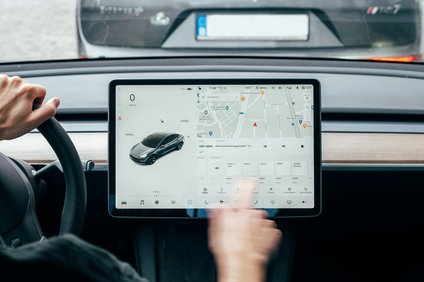Research - 17.03.2015 - 00:00
Shopping often starts in the net
Consumers of all ages spend more and more time looking for products in the internet. Shopping for clothes in the net is particularly popular: this is revealed by the latest online trade study conducted by the Institute of Retail Management at the HSG. More than 1,000 consumers in Switzerland were interviewed.

17 March 2015. The industries which have registered the fastest digital growth in the last two years include banking services (+10.9%), admission tickets (+10.5%), videos/DVDs (+9.6%), train tickets (+8.8%), music titles (+8.7%), software (+7.0%), holiday trips (+4.6%) and airline tickets (+1.8%).
Situative shopping (sometimes in the internet, sometimes in a shop) is growing most strongly in classic industries such as clothing (+13.5%), jewellery (+11.2%), electronics (+9.2%), body care (+8.3%), furniture (+4.6%) and food (+3.9%).
The shifts are at the expense of purchasing in shops, which is losing popularity in all industries. “In some industries such as clothing, there might be an online shopping revolution in the next few years,” says Prof. Dr. Thomas Rudolph, Director of the Institute of Retail Management (IRM-HSG). “Women customers, in particular, have been buying textiles more often online for two years and are looking for inspiration for new articles in the net.”
Free time takes place more strongly “online”
Young consumers under 25 spend three and a half hours a day of their spare time in the internet. Intensity of use has largely equalised between men and women, yet the interest differs. Women use the internet more frequently than men in order to communicate with others. Thus about 25% of women indicate that the social network, Facebook, is their most popular website; among men, only 16% do so. Instead, men prefer to look for news in the internet, preferably on entertainment portals and news pages. An overriding trend that is spreading is an increased fun-orientation. Almost 69% of Swiss internet users go on line rather frequently in order to “have fun”. Two years ago, the percentage was only 54%.
Conversely, the motive of “improving oneself” has remained at the same level. “In the last ten years, we have observed an increasing fun-orientation in the internet,” says Dr. Oliver Emrich, Assistant Professor at the Institute of Retail Management. This long-term trend has been reinforced by the mobile internet in the last few years. Approx. 73% of users access the internet through their smartphones at least once a week; in 2013, only 66% did.
Scepticism among younger internet users
By way of a countertrend to the increasing online attraction, some purchasing barriers are becoming more relevant again. More consumers stop buying things online because they had bad experiences (21% agreement), because they find the home delivery service poor (25%) or because the offer fails to meet their expectations (27%). Younger internet users under 25 display a clearly more critical attitude towards the internet than two years ago. Fundamental reservations about the internet as a shopping channel, such as basic dislike, however, continue to decrease in all age segments.
Picture: Photocase / trepavica
More articles from the same category
Discover our special topics











